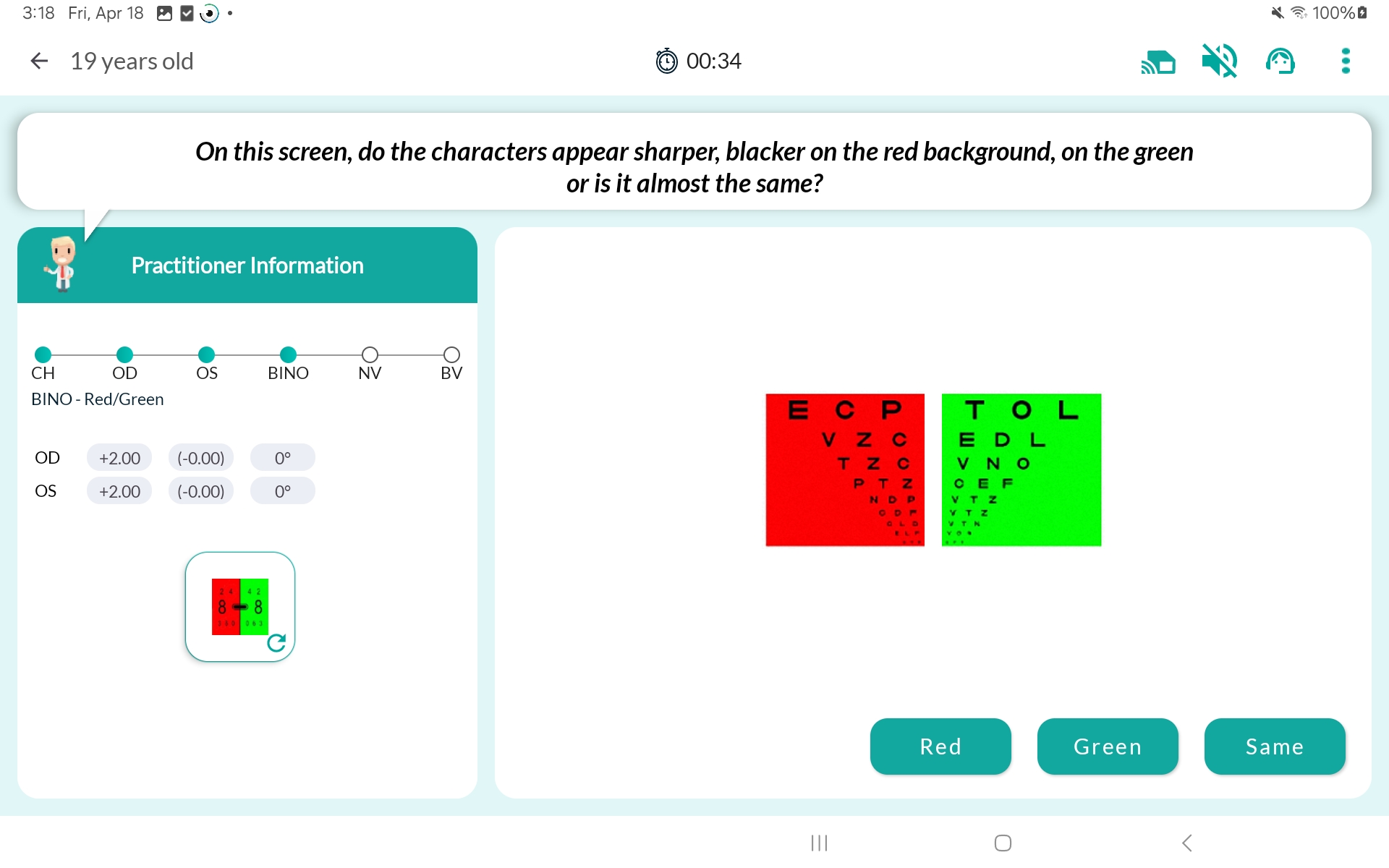The red-green test (also called the duochrome test) is a subjective test used to fine-tune the spherical value of the optical correction.
This test checks whether the image is formed precisely on the retina. In other words, whether the optical correction is properly adjusted.
The patient reads letters displayed on two different background colors: red on one side, green on the other.
Due to the eye’s chromatic aberration :
Green light (short wavelengths) focuses in front of the retina.
Red light (long wavelengths) focuses behind the retina.
Sharper on the green side → The image is focused too far forward → overcorrection → decrease the power (reduce the +).
Sharper on the red side → The image is focused too far back → undercorrection → increase the power (add more +).
Equally sharp on both sides → The image is focused on the retina → the correction is accurate.

Fill in our customer support form
or contact our specialists.